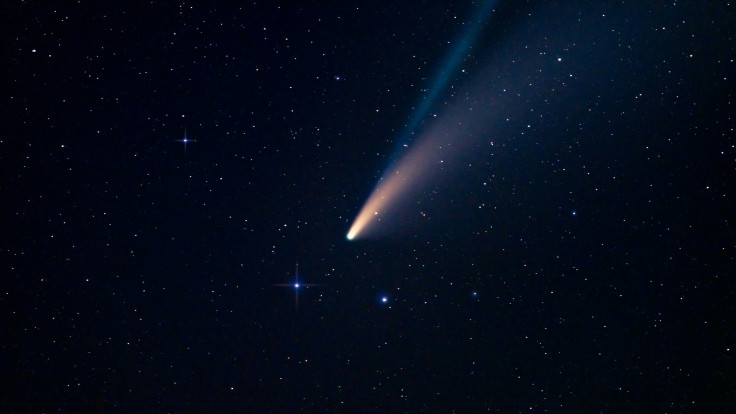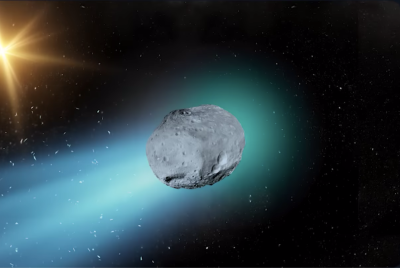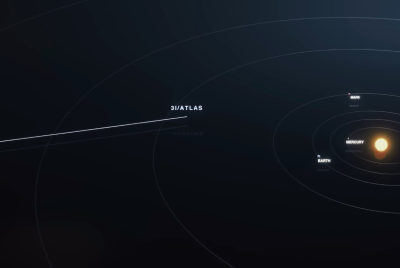Avi Loeb Claims NASA 'Comet' Has 'No Tail' and Could Be 'Something Else'
Avi Loeb says NASA's 3I/ATLAS comet has 'no tail', raising questions about its true nature.

A bold hypothesis is now gripping the astronomy world: Harvard theoretical physicist Avi Loeb claims that the interstellar visitor 3I/ATLAS shows 'no tail'—and suggests it could be 'something else' entirely.
Strange Visitor From Beyond
The object 3I/ATLAS, first detected in early July 2025, is only the third confirmed interstellar object entering our Solar System. According to the article by Tyla, images show the object travelling at tremendous speed and on a trajectory that has drawn surprise and attention.
Loeb draws attention in particular to the absence of a visible comet-tail, arguing that the behaviour is inconsistent with expectations for a typical comet.
An Unusual Appearance
As Tyla reports, follow-up observations indicate that 'the coma appears compact—with no tail of ejected material clearly visible' in recent images.
Loeb argues this is a key anomaly: typical comets venting gases and dust near the Sun produce a clear tail pointing away from the Sun, yet 3I/ATLAS appears not to. In a blog post, he writes, 'No obvious cometary tail is seen' in post-perihelion images.
What Loeb is Suggesting
Loeb suggests that the lack of a tail, combined with other oddities in its trajectory and behaviour, indicates that 3I/ATLAS may not be a natural comet. He states that the absence of the tail 'could point to alien technology.'
He also highlights what he terms 'large-scale jets' directed toward and away from the Sun, as well as mass-loss behaviour that is difficult to reconcile with a typical cometary nucleus.
Expert Reservations
However, most scientists remain sceptical of the more dramatic claim. For example, a piece by LiveScience notes that despite Loeb's speculations, 'most researchers are confident it's a natural object'.
Likewise, the publication ScienceAlert writes that although 3I/ATLAS is 'wildly unusual...every piece of evidence collected...is consistent with a natural, comet-like origin.'
These voices warn that viewing geometry, weak out-gassing, or observational limitations might account for the missing tail, rather than invoking extraordinary explanations.
What the Observations Show
According to the Tyla article, 3I/ATLAS is speeding through the solar system faster than typical long-period comets and exhibits behaviour that has prompted intense monitoring of its approach.
Furthermore, Loeb argues that if the object were shedding sufficient mass to drive the observed non-gravitational acceleration, it should have produced a visible tail—but he says, 'no clear cometary tail is seen.'
What Upcoming Observations Could Reveal
Astronomers are now preparing for a crucial observing window that may settle the debate.
As 3I/ATLAS continues its rapid approach, both ground-based telescopes and space-based observatories are expected to capture higher-resolution images that could finally confirm whether the object possesses a faint, hard-to-detect tail or truly lacks one altogether.
Researchers also anticipate collecting fresh spectroscopic data to determine what gases, if any, are being released.
If the object emits the chemical signatures typical of comets, the case for a natural origin will strengthen significantly.
But if the readings show little or no volatile activity, it would add weight to Loeb's argument that 3I/ATLAS behaves unlike any known comet.
This upcoming phase of observation is therefore critical. It offers the best chance yet to answer the question at the centre of the controversy: is 3I/ATLAS merely an unusually quiet interstellar comet—or a genuinely anomalous object that defies current understanding?
What's at Stake
If Loeb's hypothesis were correct, it would challenge fundamental assumptions about comets and possibly point to non-natural origins for the object.
That said, the scientific majority currently favours a natural explanation, viewing the oddities as extreme but within the realm of cometary physics.
Observers will be watching closely as 3I/ATLAS continues its journey and passes relatively near Earth. The coming weeks and months may yield images and data capable of discriminating between natural and exotic scenarios.
© Copyright IBTimes 2025. All rights reserved.





















